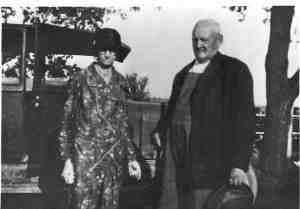Veronica “Faroneka” Sophronia Bootz – if that really was the correct spelling of her name, was my 2nd great grandmother. She has always been an enigma. German-born with a German last name, although again I suspect it is incorrectly spelled on documents in the United States, she insisted my 2nd great grandfather Johann Bernard Schmitt Anglicize his name before she would marry him. He became John Bernard Smith. It was 1856 in Peoria County, Illinois when they married.
She is one of those story puzzles you work on in 3rd grade where several words are missing from sentences and you have to guess what will complete the story. At this point, I don’t have the missing words to fill in much. What I do know was she found a way – a way to leave Hesse-Darmstedt, Germany with one of her brothers, Peter, and sister, Elizabeth, to avoid a physically abusive relationship with their father.
Family records are usually homogenized. If the victors of war write the histories, then the most politically-correct Casper Milquetoast individual must be the writer of family stories. They are usually sugar-coated and boring. “George Edward was born in 1801, the third of five children….” The truly interesting and rich family histories are those that reveal what life was really like – REALLY like.
Fortunately some of those stories remain in the form of family letters written to an uncle in Peoria, IL. For many years they were unreadable to my uni-lingual family. We understand English and a few smattering of words from high school French and Spanish. These letters were written in Old German- I don’t recall if it was Low German or High German. A German professor at the nearby university translated them for my mother back in the late 1970s. When we read the translation, we were stunned with the revelations disclosed to the uncle by Peter. He blatantly states he and his sisters desire to come to the United States and live with their uncle as their father regularly beat them. If you read between the lines it was obvious the uncle in the U.S. was well aware of it, but was much more kind to his nieces and nephews. So physical abuse by their father – and the desire to see the United States and prosper in the new country led to a pleading letter. There were a precious few letters between the two men. Our family is not even sure why we have possession of them, but fortunately we do.
Peter, Elizabeth and Veronika Bootz found their way out of Germany and out of physical oppression at the hand of their father. They found a way to get to Peoria, Illinois. Veronika found Johann Bernard Schmitt and married him, soon to become Mrs. John Smith. How ironic the brutal reality of their family letters wove a complicated tale about family relationships that was anything but simple or homogenized. Yet, when she married and adopted the American spelling of her husband’s name, she became any other “Mrs. John Smith” in America.
She found a way to slip into the shadows of the new country perhaps to hide her abusive past. Leaving the old country was not always about finding new found riches or abundant land, sometimes it was about blending in to the background or escaping your terrible past. Most important was in a time when women had little decisions to make on their own and were often victims of their circumstances, Veronika and Elizabeth along with Peter found a way.



